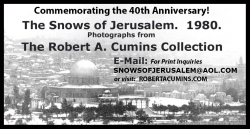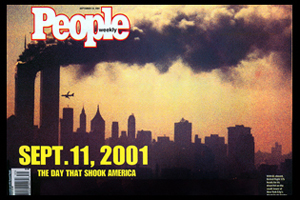
Ernest Michel survived the Auschwitz death camp because of a calligraphy course he had taken at his father’s insistence. Having been expelled with other Jewish students from German public schools, he needed to develop a skill, his father had told him.
He did just that: His penmanship became flawless, and the Nazis put it to use at Auschwitz, sparing him from the gas chambers. They conscripted him in a cynical scheme to falsify the death certificates of his fellow inmates, hoping to hide the actual cause of death: extermination. That they enlisted a Jew to do their dissembling was doubly grievous.
Mr. Michel (pronounced mish-ELL) died on May 7 in Manhattan at 92. His account of mechanically forging the death certificates was one of many he would tell in his decades of bearing witness — in writing and public speaking — to the horrors he had observed beginning in 1936, when he was 13 and barred from public school by Nazi racial codes. He never received a formal education beyond the sixth grade.
He was barely 20 when he was given the writing task at Auschwitz. He was in the camp infirmary, being treated for a head wound inflicted by a prison guard during a beating, when an aide asked whether any of the inmates had good handwriting. Mr. Michel volunteered.
“It didn’t take me long to figure out what I was doing,†he wrote in his 1993 memoir, “Promises to Keep: One Man’s Journey Against Incredible Odds.â€
“The list contained the names of those who were shipped to Birkenau and the gas chamber,†he wrote. “The Nazis, with their usual efficiency and attention to detail, kept records of all inmates sent to be gassed. Only nobody died being gassed to death. They all died by being ‘weak of the body’ – ‘Koerperschwaeche’ – or from ‘Herzschlag’ – ‘heart attack.’ â€
The job conferred on him extra portions of food, and a chance to remain alive.
Mr. Michel eventually escaped his captors on a death march between concentration camps, immigrated to the United States in 1946 and worked for Jewish causes. He raised hundreds of millions of dollars for the United Jewish Appeal. He helped persuade the Mormon Church to stop the posthumous baptizing of Holocaust victims. And he convened a world gathering of more than 6,000 fellow survivors in Jerusalem in 1981.
He was born Ernst Wolfgang Michel in Mannheim, Germany, on July 1, 1923. (He was known as Ernest in the United States.) His father, Otto, owned a cigar factory. His mother was the former Frieda Wolff. When the factory was seized by the Nazis, his father supported the family by selling his stamp collection piecemeal.
After being dismissed from public school, Ernest attended a Jewish school for a time and then worked in a cardboard factory owned by Jews until that, too, was closed. His father suggested calligraphy as something his son might do, even professionally.
As the Nazi persecution intensified in Germany before the war, Ernest’s younger sister escaped on a children’s transport to France. He acquired an American pen pal, Robert Lindsay, of Wilmington, Del., through tourists he had met.
Robert’s parents found a Jewish family to sponsor a visa for Ernest, but the offer was thwarted when the American consul told him that because of a backlog of applications, he would have to wait three years. (After the war, Mr. Michel and Mr. Lindsay met and became friends.)
On Sept. 3, 1939, two days after the outbreak of war, the Gestapo, the Nazi secret police, ordered Ernest and other able-bodied Jews to report to the local train station, where they were to be sent to forced-labor camps. It was the last time he saw his parents. He later learned that they had died at Auschwitz.
After spending several years in various labor camps, Mr. Michel himself entered Auschwitz early in 1943, after a four-day cattle-car ride.
“That arrival was the beginning of hell,†he said in an oral history. “Auschwitz was not a labor camp; Auschwitz was the end of the world.â€
Mr. Michel had been put to work building a synthetic rubber plant when the beating occurred that sent him to the infirmary. He later became a medical aide there himself and saw Dr. Josef Mengele performing his horrific experiments on prisoners.
He was evacuated from the camp on Jan. 18, 1945, as Russian troops approached. It was on a forced march between camps a few weeks before the war ended that he and two other prisoners escaped.
Remaining in Germany immediately after the war, Mr. Michel covered the Nuremberg war crime trials for a German news agency. He insisted on the byline “Special Correspondent Ernst Michel, Auschwitz No. 104995,†the number that was branded on an arm. He sat not far from the defendants.
“There were times when I wanted nothing more than to jump up and grab them all by the throat,†he said.
One day, a lawyer for Hermann Göring, the Luftwaffe commander and the founder of the Gestapo, said that Göring wanted to meet the correspondent who was a former concentration camp inmate.
“So we went to Göring’s cell and the door opened,†Mr. Michel recalled. “Göring smiled, came up to me and wanted to shake my hand. At that moment I suddenly froze. I couldn’t move. I looked at his hand, his face, and then his hand again — and then just turned round. I couldn’t do it. I just couldn’t speak to this man. Not one single word.â€
With no family left in Mannheim, Mr. Michel immigrated to the United States, where he met Suzanne Stein at a Jewish singles dance and married her. The marriage ended in divorce.
He is survived by their children, Lauren Shachar, Karen Daniels and Joel Michel; his wife, the former Amy Goldberg; his sister, Lotte Rein, and six grandchildren. His wife confirmed his death, saying the cause was complications of dementia. He lived in Manhattan.
Mr. Michel was executive vice president of the United Jewish Appeal from 1970 to 1989 and oversaw the merger that created the UJA-Federation of New York.
In 1995, he negotiated with the Church of Jesus Christ of Latter-day Saints for the withdrawal of about 380,000 names of Jewish Holocaust victims who had been posthumously baptized as Mormons. Among them were his mother, father and grandmother. During the baptisms, church members had stood in as the victims’ proxies in the belief that they might embrace the Mormon faith in the afterlife.
Mr. Michel was a founding trustee of the Museum of Jewish Heritage — A Living Memorial to the Holocaust in Lower Manhattan. In 1986, when the site was dedicated, he recalled the moments just before a friend, Leo Diament, was hanged at Auschwitz. “Remember!†he said he had urged onlookers. “Do not forget!â€
Mr. Michel said that when he arrived in the United States as a refugee, his ship had passed the very site that would hold the museum. So it was fitting, he said, that 40 years later he could stand at the same spot and say, “We did not forget!â€


.jpg)


 News Details
News Details

